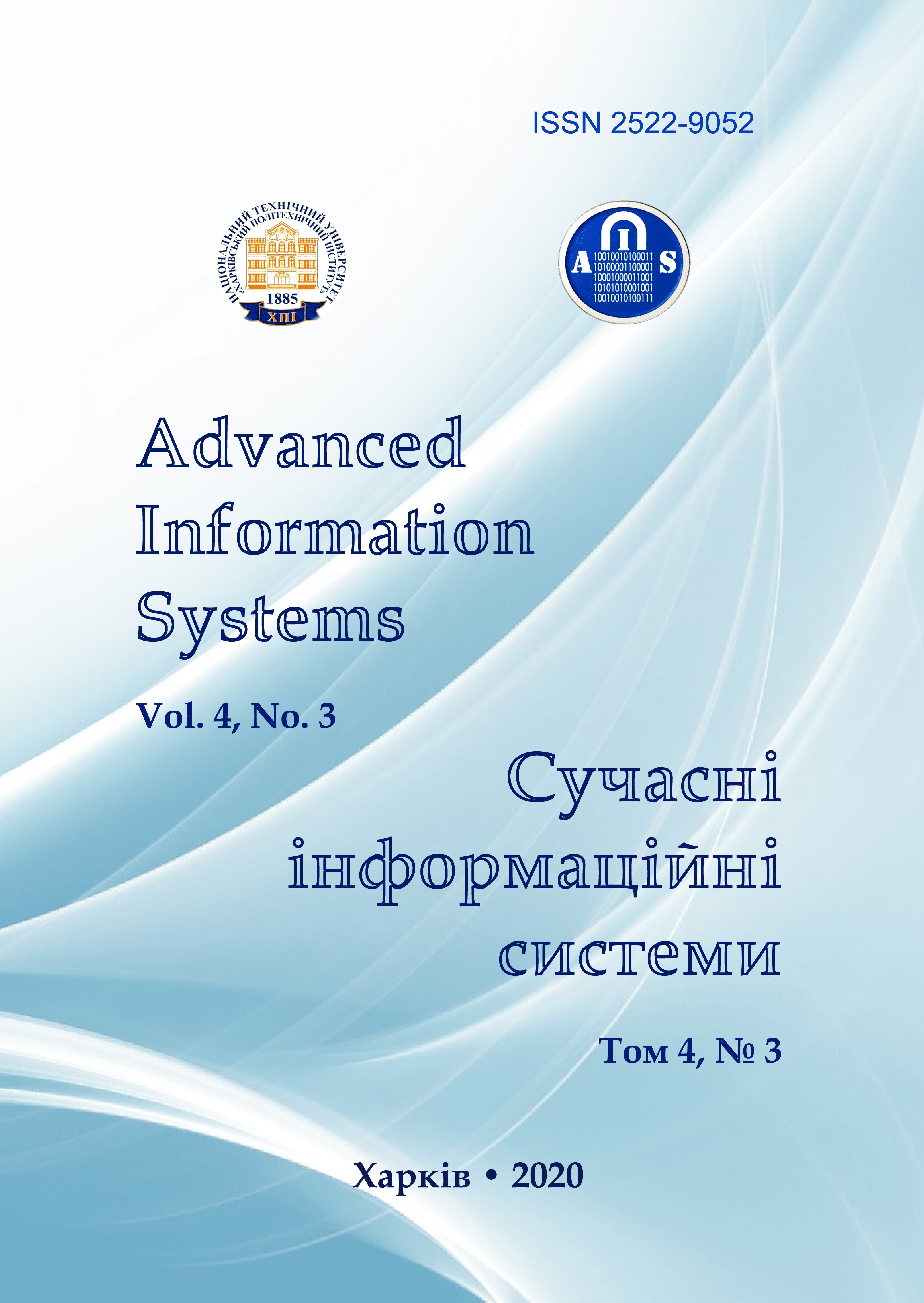A METHOD FOR USER AUTHENTICATING TO CRITICAL INFRASTRUCTURE OBJECTS BASED ON VOICE MESSAGE IDENTIFICATION
Main Article Content
Abstract
Article Details
References
(2015), The concept of creating a national system of identification of citizens of Ukraine, foreigners and stateless persons, Order of the Cabinet of Ministers of Ukraine № 1428-2015-r dated 23.12.2015, available at:
https://zakon.rada.gov.ua/laws/main/1428-2015-%D1%80.
Bugaenko, H. and Gorbenko, I. (2012), “Analysis of three biometric methods of identity authentication”, Applied Radio Electronics, Vol. 11, No. 2, pp. 262-266.
Tsarev, R. and Lemekha, T. (2016), Biometric technologies, textbook, ONAZ, Odessa, 140 p.
Moroz, A. (2011), “Biometric technologies of human identification. System overview”, Mathematical machines and systems, No. 1, pp. 39-45.
(2020), Chalk-frequency keptral coefficients, available at: http://poisk-ru.ru/s62453t2.html.
Bidyuk, P. and Bondarchuk, V. (2009), “Modern methods of biometric identification”, Legal, regulatory and metrological support of information security in Ukraine, No. 1 (18), pp. 137-146.
Lalit R., Bahl, Peter F., Brown, Peter V., de Souza and Robert L., Mercer (1987), “Speech Recognition With Continuous Parameter Hidden Markov Models”, Proceedings of the International Conference on Acoustics. Speech and Signal Processing, Vol. 2, Issues 3-4, September–December 1987, IEEE, New York, pp. 219-234.
Viola, P. and Jones, M. (2001), “Rapid object detection using a boosted cascade of simple features”, IEEE Conf. on Computer Vision and Pattern Recognition, Vol. 1, pp. 511-518.
Smetanin, K., Humeniuk I. and Nekrylov A. (2020), “Protection from unauthorized access to information and telecommunication systems through biometric user identification”, Proceedings of the International Scientific and Technical Conference "PERSPECTIVES OF TELECOM, available at: http://conferenc.its.kpi.ua/proc/article/view/200915.
Campbell, J.P. (1997), “Speaker Recognition: A Tutorial”, Proceedings of the IEEE, Vol. 85, No. 9, pp. 1437-1462.
Ing-Jr, Ding, Chih-Ta, Yen and Yen-Ming, Hsu (2013), “Development so Machine Learning Schemes for 135 Dynamic Time-Wrapping-Based Speech Recognition”, Mathematical Problems in Engineering, Vol. 2, pp. 35-42.
Voronov A.A. (1983), Methods of automatic speech recognition, Vol. 1, MIR, Moscow, 328 p.
Trysnyuk, V., Demydenko, O., Smetanin, K. and Zozulia, A. (2020), “Improvement of the complex evaluation method of vital activity risks”, European Association of Geoscientists & Engineers, Geoinformatics: Theoretical and Applied Aspects 2020, May 2020, Vol. 2020, pp. 1-5, DOI: https://doi.org/10.3997/2214-4609.2020geo071.
Smetanin, K., Litvinenko, A. and Kostenko, D. (2019), “Biometric authentication of users based on voice signals in cyberspace”, Problems of theory and practice of information confrontation in the conditions of hybrid wars, scientific-practical. Conf., Oct. 24–25. 2019, ZhVI, Zhytomyr, pp. 205-207.
